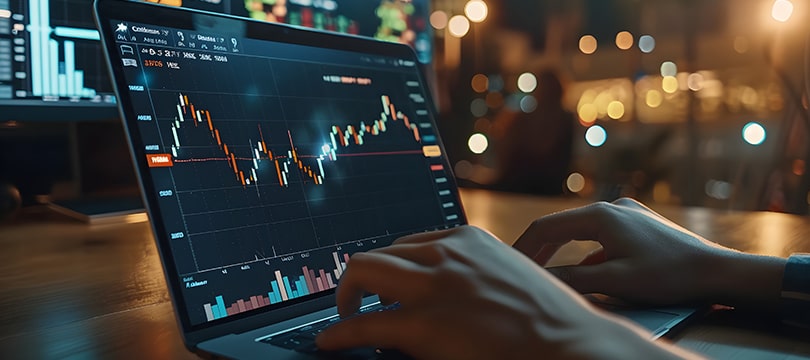Financial Leverage: The Only 3 Cases When It Can Be Considered
September 6, 2024

Financial leverage is a great tool... When viewed from the outside. Considered by some as a promise of quick gain and by others as a double-edged sword, it can still be integrated into one's trading activity. As long as the right conditions are met and the most favorable scenarios emerge. We reveal them in the course of this guide.
Financial leverage in detail
Before presenting the cases in which financial leverage can be considered, it is good to provide a clear definition of this tool and its risks.
Financial leverage is a tool that allows traders to control a market position larger than the capital actually invested.
Its operating mechanism is based on a sort of temporary loan offered by the Broker, which multiplies the trader's initial capital.
Leverage is expressed in ratios. For example, with a leverage of 10:1, a capital of 1,000 euros allows you to control a position of 10,000 euros.
This amplifies both potential gains and losses. The margin, i.e., the capital actually invested by the trader, represents only a fraction of the total position.
Financial leverage has enjoyed and continues to enjoy a certain success. The reason is simple: potentially, it allows you to amplify potential profits despite reduced initial capital.
Nevertheless, it offers (always in theory) the possibility of accessing markets with a value higher than one's own availability, allowing to exploit small price variations to obtain significant returns in a short time.
The risks of financial leverage
It is a well-established fact, even if many budding traders learn it at their own expense and on their own skin: financial leverage is dangerous. It exposes those who use it to significant risks.
The biggest risk is that of amplifying losses, rather than profits.
If a trading position moves against the trader, the loss is not limited to the capital initially invested, but can exceed it, requiring additional funds to cover the margin. This phenomenon, known as a margin call, forces the trader to deposit capital to keep the position open, otherwise risking the forced closure of the position at an unfavorable level.
This is where the greatest risk becomes apparent: that of suffering a total draining of the account.
For this reason, it is good to use financial leverage only under certain conditions. Here below, we present three of them.
Case #1 Large availability of capital
Financial leverage can be considered if you have a lot of capital. In this case, the trader is able to cover any losses without risking being "liquidated" by the Broker, having to forcibly close his positions or, even worse, consuming all his resources.
Nevertheless, with abundant capital, even if the position opened with leverage undergoes a temporary adverse movement, the trader can afford to maintain the position until the market recovers.
This reduces the risk of a margin call, which is one of the main threats in the use of leverage. Furthermore, with well-planned risk management, the trader can allocate only a small percentage of his capital to leveraged positions, further reducing the overall risk and exploiting the leverage itself to amplify potential returns without compromising his financial solidity.
Case #2 Cold blood and emotional resistance
The reference is to traders who possess strong emotional self-control and a good ability to remain calm under pressure.
As we have already specified, trading with leverage amplifies both gains and losses, and a trader who does not give in to emotionality is less inclined to make hasty and impulsive decisions, such as liquidating a position prematurely or excessively increasing exposure in an attempt to recover losses.
Emotional resistance, nevertheless, allows the trader to follow a disciplined trading plan, based on objective analysis rather than instinctive reactions. Such an approach automatically reduces the risks associated with leverage, as it allows for the execution of effective risk management strategies, such as the use of well-positioned stop losses and accurate position sizing. In the best-case scenario, leverage actually leads to gains; in the worst case, losses are still contained.
Case #3 The trade looks promising... Very promising
The third scenario refers to trades supported by in-depth analysis and extremely favorable market signals.
In this case, the trader can boast a high level of confidence in the trade, bolstered by a rare combination of technical and fundamental factors, which indicate a high probability of success.
But beware: the analyses must be truly in-depth and the market signals truly favorable. The risk of mistaking hopes for evidence is very high when the stakes rise. And if financial leverage is used, the stakes always rise.




